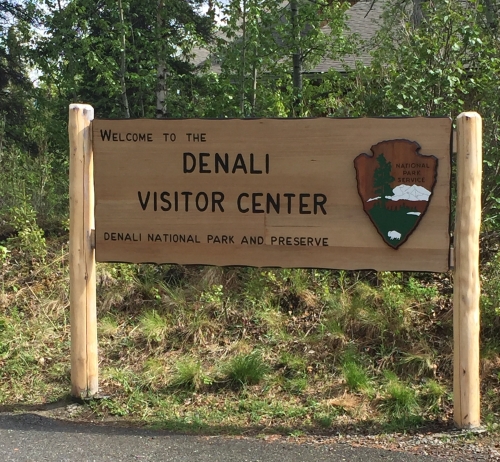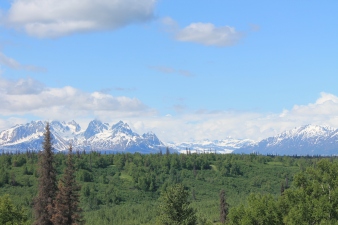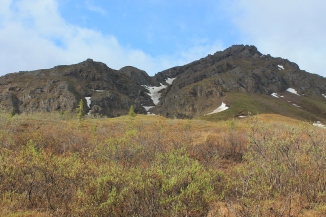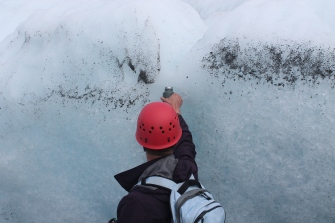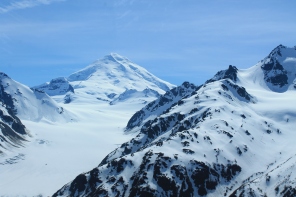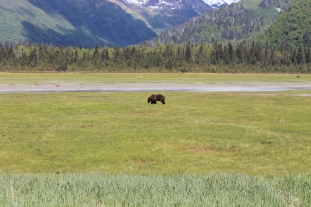I am not a die-hard conservationist or environmentalist. Although I generally follow the principles of Leave No Trace in my outdoor adventures, I’m not obsessive about it, and while I respect nature, I also believe that I, too, am a part of the environment. That being said, I have a few pet-peeves about behavior that I often observe in remote locations, and since I experienced all of them on my recent day hike in Pikes National Forest, it seemed topical to mention them.
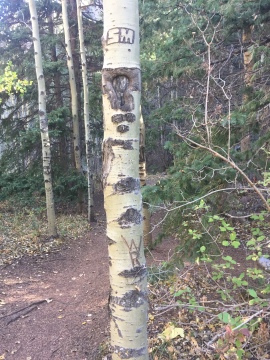
First, tree carvings. Almost any time that I follow a trail for any length of time, I come across trees, especially birches and aspens, with the lower trunks bedecked with initials from past travelers. This tends to be more common near the beginning of a trail, since in general the people who are inclined to do that don’t seem inclined to penetrate to the more remote and difficult to access regions, but the fact that it is present at all is disheartening. It simply doesn’t make sense to me. Are people so concerned with their own mortality that they feel the need to ensure that every future hiker is aware that so-and-so was here with so-and-so?
Next up is trash. I’m not talking about the occasional forgotten tent stake or bit of paper that got away. That’s understandable, and while not desirable, it does happen. Finding empty cans, bottles, and other human detritus in the sorts places I was exploring last weekend, or anywhere else for that matter, is really unfortunate. That’s not a matter of forgetting it was there, or not being able to find it when you go to leave; it’s a matter of making a deliberate decision to leave it in the wilderness instead of taking the time and effort to carry it back out with you. Since I make it a policy to not complain about something if I’m not willing to do something to affect a solution, I will often carry an extra bag with me when I hike, and pick up trash if I come across it. At least that way, the next hiker won’t have their experience marred by its presence.
Third, and probably least significant, is campsite evidence. If I camp somewhere, I try to make some effort before I leave to return the environment to something approximating the state in which I found it. Mostly, this means burying, scattering, or otherwise obscuring the evidence of my campfire, if I made one, including returning any seating arrangements I may have made to their original, or at least more random locations. This is mostly just an aesthetic matter: I want the next person to be able to experience as pristine a wilderness as possible, and not find it scarred by wherever I decided to camp (this is obviously irrelevant if you’re hiking somewhere with established campsites).
All of this really comes down to the environment that will be experienced by succeeding hikers. When I go hiking, there are times when I feel like even a trail is too much evidence of humanity – I want to feel like I’m somewhere that no one but me has ever walked before, even if I know that’s probably not the case. At the very least, I don’t want to be confronting stark evidence of humanity’s less desirable characteristics in the form of tree carvings and trash around every switchback. I try to obey the same philosophy in my adventures, so that the next person can experience it in much the way I did: unblemished.
As I said at the beginning of this post, I’m not an obsessive environmentalist or a die hard conservationist. I believe that people have a role and a place within a natural environment as much as anything else does – that doesn’t change just because we’re able to exercise greater control over our environment. However, I also believe that with that ability also comes a greater responsibility to respect that natural environment, and part of that is not leaving your obvious, human markings on it for posterity. Please, find some other, more productive way to ensure your immortality. Now, I promise I’m done proselytizing.

